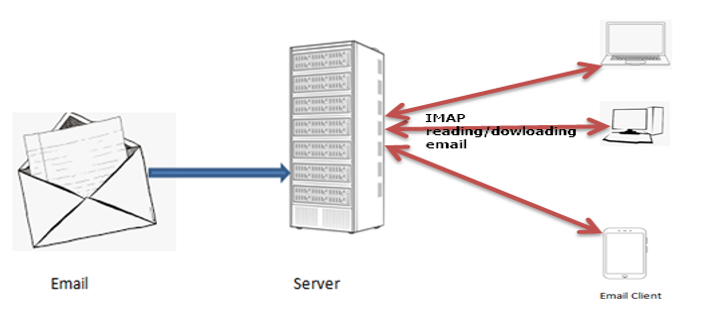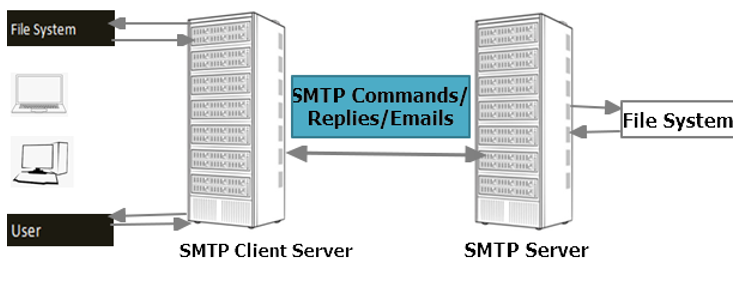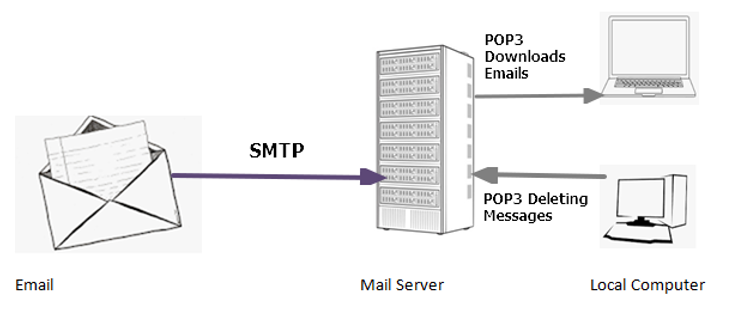Businesses and companies use emails to communicate with stakeholders, partners, clients, and employees. For organizations or enterprises that send or receive bulk emails every day, managing the email systems can be strenuous and expensive. Email protocols can save you from this daunting task.
Notably, the best email protocols feature the mechanisms that define the email exchange between clients and servers. These mechanisms ensure that you receive the emails faster and more accurately.
This article defines and explains the three most common email protocols that any large or medium-sized company will find useful. SMTP, IMAP, and POP3 are undoubtedly the top three email protocols in the list. While they all work towards enabling the flawless exchange of emails, each protocol is pretty specific with its requirements, and that is what defines your choice.
What Is an Email Protocol?
An email protocol is a predefined set of rules, terms, and conditions that ensure that there is a standard exchange of emails between servers and respective email clients. Ideally, the email protocols ensure that the process of exchanging the emails is universal and applies to all users.
The primary advantage of email protocols to individuals, businesses, and organizations is that the recipient can read a sent email in the same format, irrespective of the difference in servers used. These protocols make it possible to send and receive the emails from different devices, operating systems, and networks without any problems.
This explains why emails are different from text messages. For example, a Whatsapp message can only be read on a Whatsapp platform. On the other hand, an Apple mail client using a Gmail server can send an email to a recipient using a Zoho server on Outlook.
Thus, email protocols spell out the standard for email encoding, sending, receiving, and rendering an email. The overall goal of these protocols is to ensure that the entire emailing process is universal, standard, and reliable.
Top 3 Email Protocols That You Should Know
Notably, this article focuses on the three most popular email protocols. We will discuss the Internet Message Access Protocol (IMAP), Post Office Protocol (POP) and Simple Mail Transfer Protocol (SMTP). Each of these email protocols come with elaborate email management mechanisms.
Internet Message Access Protocol (IMAP)
Internet Message Access Protocol or IMAP is an email protocol that allows the users to access the email messages via the internet from anywhere globally. Besides reading, it also allows you to organize and sort your messages. It uses servers to store the messages. Thus, your email client will contact the server whenever you check your inbox.
IMAP does not mean that you will save, download, or store the messages on your device. Instead, you will only read the messages off the server, making it possible to check the emails from different servers.
It stands out as a very fast and efficient protocol. With IMAP, you can send the messages conveniently. The server keeps a record of all your messages in the sent box for viewing from anywhere. While it won’t store the messages on your device, it synchronizes the messages in the server with those in the server once you connect your server to the internet.
Simple Mail Transfer Protocol (SMTP)
Simple Mail Transfer Protocol or SMTP is a protocol used by mail servers for sending, receiving, or relaying the email messages via the internet from one email account to another. Each SMTP server has an email address. Notably, you can always find the email address for the settings section.
The SMTP concept is simple to understand. Once you use GMAL or AOL as an SMTP host to send an email, SMTP will make a decision and choose the server that will process and send the message. On the same note, the recipient’s service provider (GMAIL or AOL), will also process the message in the recipient’s inbox and open or download it for further action.
Thus, this protocol is responsible for relaying the messages between servers and email clients. The two entities use a particular port for communication. Notably, they both use a set of commands and replies to process the email. The main advantage of SMTP is that you can send the emails from the same account using different email applications.
Post Office Protocol 3
Post Office Protocol version 3 is an email protocol that comes in handy in accessing the inboxes stored in email servers. It is responsible for accomplishing the download and delete functions on the client inbox.
The protocol works by the client connecting to the mail server first. Once connected, POP3 will retrieve all messages from the client’s mailbox. It then downloads and stores them on your PC or device of choice while deleting them from the central server.
Unlike the first two discussed protocols, this protocol allows you to access your messages while offline. You can also opt to keep the messages on the server to access them from any gadget.
Conclusion
POP3, SMTP, and IMAP are undoubtedly the three most popular email protocols. They work differently and on different port numbers.



